Table of Contents
- Why Screening is the Bottleneck—and the Best Place to Automate
- What “AI Candidate Screening” Really Means
- Implementation Playbook
- Automation that Respects Candidates + Compliance
- The Essential Toolkit
- Best Practices for Automating Candidate Screening
- What to Look for in AI Screening Tools
- Sample Screening Flow
- FAQ
- Why Teams Choose Whippy for Screening Automation
Try Whippy for Your Team
Experience how fast, automated communication drives growth.
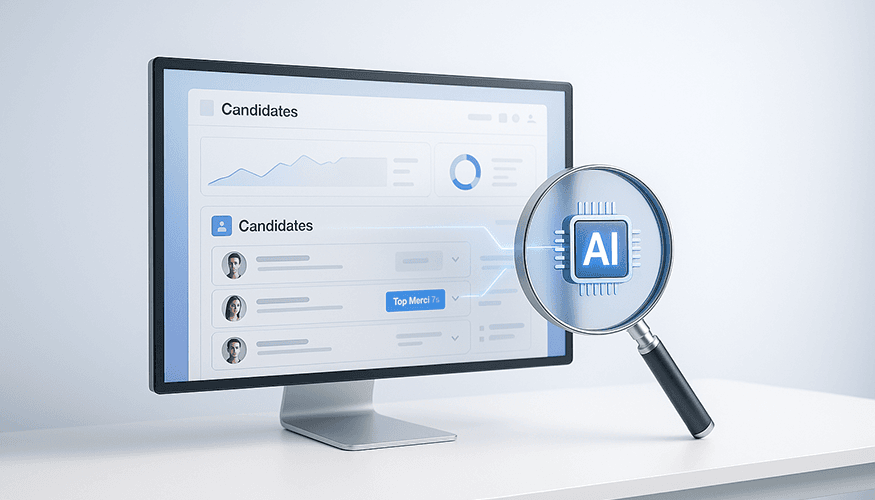
To automate candidate screening, the goal is to streamline how recruiters identify and advance top talent without sacrificing quality or compliance.
It begins by connecting AI screening software for recruiters↗ or AI candidate matching tools↗ directly to your ATS (e.g., Bullhorn↗, Avionté↗, Crelate↗).This tight integration allows the system to automatically pull job details and candidate data, keeping everything in sync as you build an automated hiring process↗ that scales effortlessly.
From there, recruiters define role-specific pre-screening automation criteria — including knock-out questions, required skills, language fluency, preferred shifts, and pay range filters. Once this framework is in place, AI-powered screening conversations, AI interviewing, or resume parsing can begin at scale — combining automation with AI in candidate selection to ensure every applicant is evaluated fairly and consistently. Candidates are evaluated consistently based on objective rules and contextual signals, ensuring fairness and precision.
Every response is scored, ranked, and annotated with structured data. The results flow back into the ATS, automatically updating candidate records with notes, rankings, and recommended next steps. The system then triggers follow-up actions like candidate communications, interview scheduling, or recruiter alerts — removing delays that cause drop-offs.
When applied effectively, automating the candidate screening process does more than save time; it creates a smarter, data-driven recruitment engine. Recruiters regain focus on high-value human interactions while the AI handles the repetitive triage work. This blend of efficiency and personalization defines smart hiring automation in the era of modern recruitment.
Why Screening is the Bottleneck—and the Best Place to Automate
Screening is the most time-intensive and inconsistent stage in the recruitment process. Recruiters in staffing firms↗ and large enterprises often face hundreds — even thousands — of resumes per open role. The challenge is rarely finding applicants; it’s identifying the right ones fast enough to maintain momentum. To handle this scale efficiently, high-volume recruiting software for staffing firms↗ helps automate repetitive pre-screening and shortlist generation.
In most teams, manual screening leads to delays, human error, and incomplete records. Recruiters spend hours reviewing repetitive details — availability, shift compatibility, work authorization — while great candidates drop off. AI hiring automation for high-volume recruitment eliminates this bottleneck by handling the repetitive and low-value screening tasks instantly, across channels — similar to what After-Hours Recruiting↗ enables for 24/7 applicant engagement.
A robust AI recruiting process now includes:
Instant engagement: Candidates can start automated screening interviews or chat-driven AI interviewing experiences right after applying — via web, SMS, or voice.
Objective scoring: AI tools for candidate evaluation assess each applicant against pre-set requirements, scoring skills, availability, location, and compliance.
Seamless synchronization: Data from every interaction feeds back into your ATS automatically, providing a clean, structured view for recruiter decisions.
The automated candidate screening benefits extend beyond efficiency. Recruiters see faster shortlists, improved candidate communications, and better data accuracy for long-term reporting. With staffing firm candidate screening automation, teams can scale operations, reduce bias, and maintain consistency across multiple branches or franchises — all without adding headcount.
When powered by generative AI and adaptive learning, automation even identifies subtle fit patterns (like shift flexibility or tenure likelihood) that traditional filters overlook. This level of intelligence enables recruiters to fill roles faster and make more confident hiring decisions — transforming screening from a bottleneck into a competitive advantage.
What “AI Candidate Screening” Really Means
Many organizations talk about AI in hiring, but few implement it effectively.
True AI-driven candidate screening is more than keyword matching — it’s a structured process where automation, data, and recruiter intuition work together to produce consistent results, forming a scalable candidate screening process that grows with your organization.
It typically follows four repeatable stages:
1. Job Intake & Rules
Before automation begins, recruiters configure candidate screening methods and rules. This includes defining hard knock-outs such as eligibility, location radius, or certifications, along with soft indicators like recent tenure or skill depth. The AI then applies weightings that mirror recruiter judgment, enabling intelligent candidate screening without human bias. This foundational step ensures every decision follows a transparent, data-backed process.
2. Data Capture at Scale
This is where automation accelerates results.
Through AI interview screening — via chat, text, or voice automation↗ — candidates engage in structured Q&A flows that feel natural yet remain standardized. This step also enhances AI recruiter screening by giving automated systems recruiter-level insight into candidate skills, availability, and intent. Resume parsing complements these interactions by extracting critical information for AI in resume shortlisting, while screening interviews automation ensures every applicant is evaluated consistently.
For global or multilingual teams, these tools include localization and translation capabilities, expanding candidate access and improving inclusivity.
3. Scoring & Ranking
Once responses and resumes are collected, AI-powered candidate screening tools process everything through advanced scoring logic. They evaluate skills, experience, shift preferences, and availability to produce objective rankings. Recruiters then see clear insights and scorecards that help them prioritize outreach.
When connected to AI tools for recruiters, the system can trigger candidate communication automation — for instance, sending interview links or document requests instantly using automated sequences↗. This speeds up follow-ups, prevents drop-offs, and enhances the overall candidate experience.
4. ATS Write-Back & Workflows
Whippy’s deep ATS integrations — including Bullhorn, Avionté, and Crelate — automatically sync candidate scores, notes, and next-step actions back into your system. This creates a seamless, automated recruitment workflow where every update, ranking, and recruiter note is captured in real time, eliminating manual data entry and reducing administrative overhead.
Each screening session becomes structured, searchable, and auditable, building a reliable digital record that supports compliance and performance tracking. This level of automation is the foundation of AI-driven recruitment workflows that scale effortlessly as hiring demand grows.
Want to see how Whippy connects to your existing tech stack?
Explore all Whippy integrations↗ and VoIP solutions↗ to connect calls, texts, and automations seamlessly.
Implementation Playbook
Transitioning to AI screening software for recruiters can feel complex, but a structured roadmap minimizes disruption. This implementation playbook outlines how enterprises and staffing firms can successfully operationalize candidate evaluation automation.
1. Map the Screening Logic
Start by identifying essential versus desirable attributes for each role. Think in recruiter terms: work eligibility, certifications, commute distance, availability, and soft skills.
This mapping step enables staffing firm candidate screening automation and candidate pre-screening automation that mirror how your top performers already assess candidates — but at machine speed and perfect consistency. Once this logic is documented, it can be replicated across roles, ensuring every applicant is evaluated fairly and objectively.
2. Connect AI Tools to Your ATS
Integration is where most automation projects succeed or stall. Using secure credentials and field mapping for statuses, notes, tags, and scoring fields ensures a clean data loop. A well-integrated workflow means candidate information moves instantly from AI to ATS, avoiding duplicate records or manual updates.
This connection is the bridge between AI tools for staffing agencies and the systems recruiters rely on daily — the key to a truly automated hiring process.
3. Launch a Short Pilot
Pilot with two distinct roles — one high-volume, one specialized — to measure both speed and quality improvements.
By comparing manual vs automated candidate screening, you’ll see tangible results: reduced time-to-shortlist, higher candidate engagement, and fewer drop-offs. These findings help you build internal buy-in and fine-tune your templates for wider rollout.
4. Standardize Your Templates
Standardization turns pilot success into scalable efficiency. Develop reusable flows tailored to your main verticals — industrial, healthcare, hospitality, retail, or seasonal. This step guarantees repeatable outcomes while allowing localized adjustments. It’s how leading staffing firms automate high-volume candidate screening without losing nuance or brand consistency.
5. Expand with Automation Rules
After stabilization, add advanced rules like automated interview screening, dynamic follow-ups, or automatic routing for qualified candidates.
At this stage, automation doesn’t just replace manual screening — it orchestrates smart hiring automation. The system learns from patterns, applying generative AI to refine job-fit predictions, detect anomalies, and improve over time. Recruiters gain insights that lead to faster, better hiring decisions across departments or franchise branches.
Automation that Respects Candidates + Compliance
While speed and scale matter, great recruiting automation also prioritizes ethics and candidate experience.
Modern AI screening tools for staffing firms are designed to eliminate hiring bias with AI by enforcing standardized evaluations and consistent scoring criteria.
Instead of subjective filtering, AI-powered screening creates fairness and transparency through clear logic and documentation.
Transparency and audit trails are non-negotiable: every decision must be explainable and backed by digital evidence. Ethical AI in recruitment requires clear configuration — from which fields are analyzed to how weightings are applied. The goal is to ensure fairness in automated candidate screening without compromising compliance.
To achieve this:
- Exclude sensitive attributes like age, gender, or background indicators.
- Use calibration audits and reviewer spot checks.
- Maintain clear documentation on every automated hiring process decision.
When done properly, how AI improves candidate experience becomes obvious. Applicants receive instant responses, transparent feedback, and faster progression — all part of an efficient, humanized, and fair system.
This commitment to both compliance and empathy defines the future of modern recruitment — one where technology doesn’t replace recruiters, but amplifies their ability to hire inclusively and intelligently.
The Essential Toolkit
To deliver on speed, precision, and compliance in a modern recruitment environment, your tech stack must be purpose-built — not patched together. The right combination of screening automation solutions ensures accuracy while keeping the streamline recruitment process smooth and consistent across every recruiter, role, and region.
At the core is AI screening software for recruiters equipped with configurable flows and dynamic knock-outs. These tools automate the earliest steps of qualification while keeping recruiters in control of the rules and scoring logic. Layer on AI tools for HR teams or staffing agencies that support full branding, multilingual experiences, and mobile-first access. This is what allows candidates to screen and self-schedule interviews effortlessly, while maintaining a professional brand image at scale.
Your system should also include recruitment automation tools or orchestration platforms that manage triggers, handoffs, and next steps across your ecosystem. When a candidate completes an automated resume screening or AI-powered interview, these systems route data instantly to the right recruiter or department — without human intervention. That orchestration ensures that automation doesn’t live in silos but connects to every part of your workflow.
A high-performance stack also requires robust recruitment efficiency software for analytics, SLAs, and productivity dashboards. Combined with AI tools for candidate evaluation that are explainable and auditable, your team gains total visibility over conversion rates, sourcing quality, and bottlenecks. And because integrations can make or break automation success, deep ATS integration candidate screening (Bullhorn, Avionté, Crelate) remains non-negotiable. Look for two-way syncs, error logging, stage updates, and activity tracking.
Finally, use this stack to support both AI hiring software for enterprises and agile staffing firms that depend on quick responses. This combination gives you the best of both worlds: scalability and flexibility, without the complexity of rebuilding infrastructure each time your hiring volume surges.
For comparison’s sake, think of this as building a cockpit for automation. Every instrument — your tools to automate candidate screening, scheduling, and analytics — must work together to maintain speed, precision, and compliance without turbulence.
Best Practices for Automating Candidate Screening
While technology powers automation, the real results come from how teams use it. Successful talent acquisition automation isn’t about replacing human judgment; it’s about multiplying recruiter capacity through consistency and insight.
Begin with a focused approach. Start narrow — a single high-volume role or market — and prove value before scaling across divisions. This allows your team to test workflows, validate metrics, and refine thresholds before deploying across your entire automated hiring process. By beginning small, you minimize disruption and accelerate learning.
When designing interviews, remember that attention is scarce. Keep screening conversations short and high-impact — typically five to seven questions that expose must-have qualifications, licenses, or availability. This approach, supported by best AI screening tools, keeps candidates engaged while capturing rich data for scoring and shortlisting.
Next, shift the recruiter mindset from note-taking to decision-making. Replace unstructured commentary with standardized fields and data tags. This practice not only increases analytical accuracy but also ensures fairness in automated vs manual candidate screening comparisons. Structured data can be tracked, analyzed, and improved — handwritten notes cannot. For more on optimizing every screening touchpoint, explore our Recruitment Process Automation How-To↗ guide.
Routing and responsiveness are equally critical. Top candidates vanish fast, so configure rules that automatically route high-scoring applicants to recruiters or trigger follow-up campaigns↗. With candidate screening automation best practices in place, supported by advanced candidate screening automation tools, you can streamline recruitment process stages and maintain momentum even during high-volume surges.
Finally, commit to ongoing measurement. Track time-to-shortlist, response latency, and qualified-to-interview ratio as leading indicators of success. Continuous optimization helps you identify inefficiencies and prove ROI. Over time, these small improvements compound, building a resilient framework for smart hiring automation across multiple brands and regions.
What to Look for in AI Screening Tools
Choosing the right platform is not just about features; it’s about aligning technology with your staffing strategy. When evaluating the best automated job candidate screening software, look for systems that enhance recruiter performance rather than replace it.
Configurability should come first. Every role and industry has unique nuances, so your software must allow role-specific scripts, dynamic follow-ups, and policy-based exclusions. Flexibility enables recruiters to tailor their automation without losing governance. Next is scalability: can the platform handle peak seasons, such as retail holidays or industrial hiring surges, without compromising performance? True scalability separates mature recruitment automation software from basic tools.
Transparency is equally vital. Explainability ensures recruiters and compliance teams understand every score or ranking produced by the AI. Whether using resume parsing, chat interviews, or skill matching, the system should make it clear why a candidate advanced or declined. This accountability is the foundation of ethical and auditable automation.
Enterprise buyers should also assess security and privacy standards — encrypted data handling, user roles, and audit trails are critical for compliance.
Integration depth matters too. Look for ATS depth with two-way synchronization, automated status updates, and error management, especially if your team works across Bullhorn, Avionté, or Crelate.
To decide among options, conduct a tool comparison candidate screening exercise. Score vendors on configurability, scalability, compliance, and support. Evaluate both quantitative metrics (throughput, latency) and qualitative feedback (ease of use, recruiter adoption). For a closer look at how top recruiters compare tools, see our tool comparison for candidate screening↗. By approaching this systematically, you’ll find not just the best automated candidate screening tools, but a solution that fits your long-term roadmap for talent acquisition automation.
Finally, prioritize analytics. A top-tier tool should provide real-time insight into pipeline health, recruiter productivity with AI, and candidate quality — allowing leaders to measure efficiency improvements backed by automation. These metrics help leaders make proactive adjustments instead of reactive ones, creating a sustainable competitive edge in modern recruitment.
Sample Screening Flow
A consistent, transparent process is the backbone of automation. Here’s what an optimized candidate screening process looks like when executed through the best AI screening tools and integrated systems:
A candidate applies through your website or job board, triggering AI-powered screening via SMS, email, or a branded web form. The system initiates a friendly conversation — an AI interview screening experience that mimics recruiter dialogue while capturing structured data. For teams using voice or SMS channels, our Voice AI Recruiter for Staffing Teams↗ example shows how automated voice engagement fits seamlessly into this workflow.
Over five to seven targeted questions, the candidate shares critical details such as certifications, shift preferences, start date, and pay expectations. At the same time, resume screening automation extracts relevant information from their CV, ensuring consistency and completeness while maintaining accuracy at scale. The AI uses this data to produce a comprehensive score based on skills match, location, and compliance factors.
Immediately after, the candidate receives an outcome: either an invitation to self-schedule an interview, a request for missing information, or a polite decline. This real-time feedback improves transparency and keeps candidates engaged — a hallmark of effective screening automation solutions.
Behind the scenes, ATS integration automatically updates records, writes scorecards, and alerts recruiters to top matches. The process runs 24/7, adapting to new applicants and redistributing workloads automatically. Over time, these tools to automate candidate screening learn from historical data to fine-tune question sequences and improve accuracy.
This kind of “boringly consistent” automation might not sound exciting, but it’s what transforms productivity. Recruiters regain hours every day, candidate experience improves, and data quality reaches audit-ready standards. In a high-volume staffing world, that consistency is the quiet superpower that keeps hiring teams from burning out — and that’s what real recruitment automation tools are designed to achieve.
FAQ
Q: What is automated candidate screening
A: It’s the use of automated candidate screening software and AI-driven workflows to evaluate applications at scale—collecting structured data, scoring fit, and updating the ATS automatically.
Q: How to automate candidate screening?
A: Define role criteria, connect an AI tool to your ATS, run short screening flows, score/rank, and trigger next steps—no manual triage required.
Q: Does automation replace recruiters?
A: No. It automates candidate screening tasks so recruiters spend time on high-value interviews and offers, not inbox triage. Learn how recruiters stay in the loop with How Recruiters Work Side-by-Side with an AI Recruiter↗
Q: How do we keep it fair?
A: Use ethical AI in recruitment, documented rules, excluded attributes, and periodic audits for bias and drift.
Why Teams Choose Whippy for Screening Automation
Whippy brings together AI candidate screening, AI recruitment automation, and deep ATS integrations—enabling you to automate screening, keep data clean, and move faster from apply to interview.
For example:
CCS Staffing↗ saved $1.64 million per year by replacing its sourcing team with Whippy’s AI agents, cutting applicant screening costs by 96% in just 30 days.
Link Staffing↗, an industrial staffing firm, deployed AI virtual recruiters via voice/SMS and conducted over 2,500 interviews monthly at just $2 each—reducing interview costs by 95% and saving 45 minutes per candidate.
A franchise site↗ using Whippy’s job-board automations increased conversions by 56% while handling large application volumes efficiently.
If you’re ready to reduce recruiter workload, boost speed-to-hire, and deliver consistent, bias-free screening at scale, now’s the time to see it live.
Request a Free Demo↗ — and experience how Whippy can automate your next candidate screening flow with measurable results.
Table of Contents
Table of Contents
- Why Screening is the Bottleneck—and the Best Place to Automate
- What “AI Candidate Screening” Really Means
- Implementation Playbook
- Automation that Respects Candidates + Compliance
- The Essential Toolkit
- Best Practices for Automating Candidate Screening
- What to Look for in AI Screening Tools
- Sample Screening Flow
- FAQ
- Why Teams Choose Whippy for Screening Automation
Try Whippy for Your Team
Experience how fast, automated communication drives growth.
Related Articles
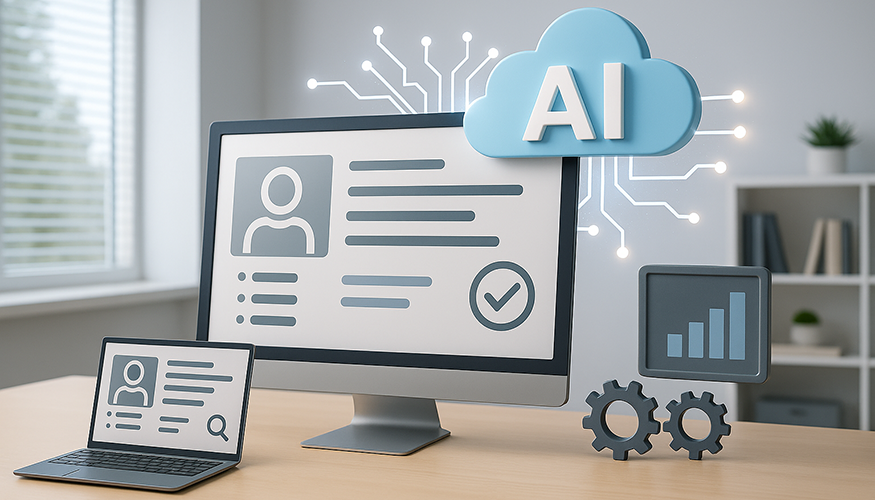
AI Agent for Recruiting: Hire Faster
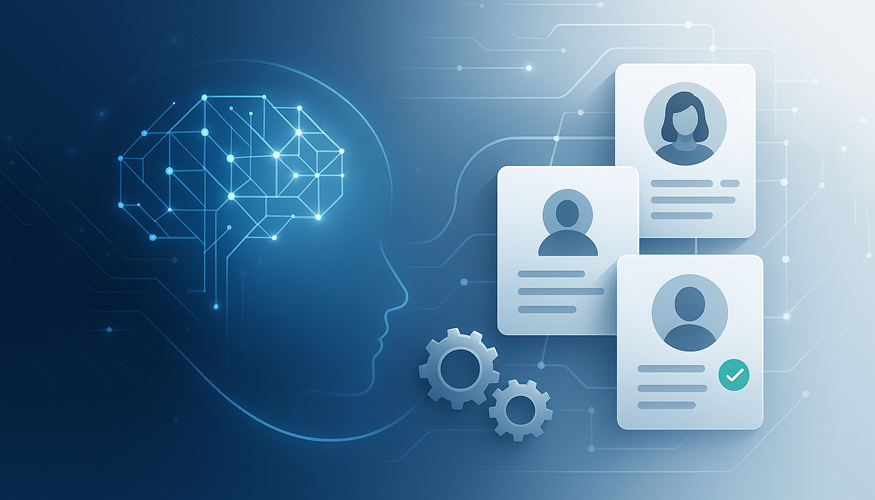
Enterprise Staffing Solutions with AI Automation

AI Recruiting Agents Are the Future of High-Volume Hiring
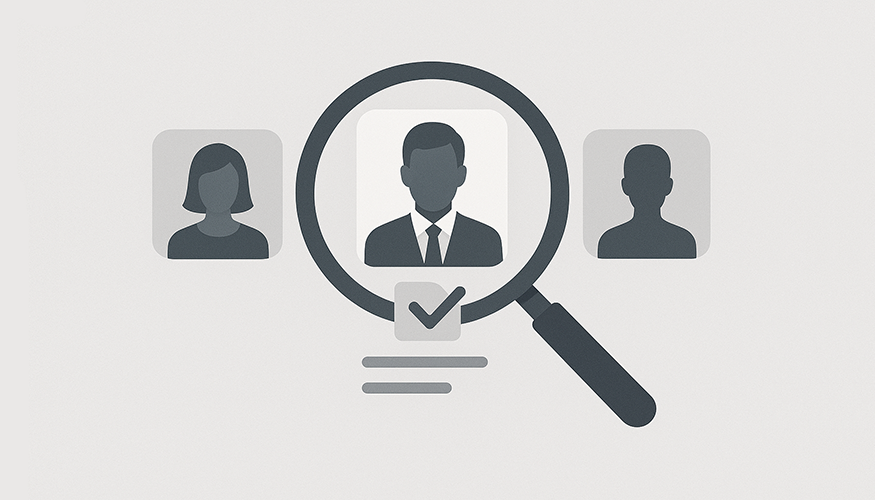
AI Agents in Hiring for ATS Users
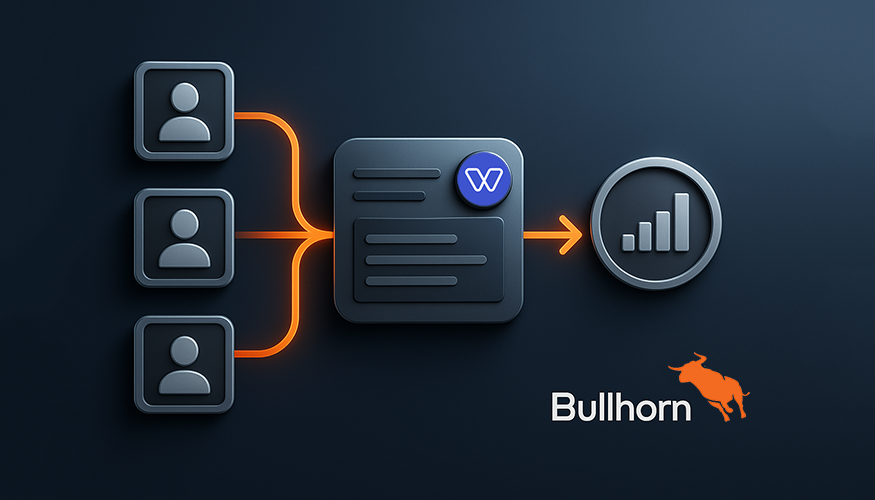
Bullhorn AI Assistant: In-ATS Recruiter Workflow
